How to Remove Limescale
Limescale is caused by a build-up of calcium and magnesium minerals in hard water. Water evaporates from the surface and leaves a white film, the particles of which thicken and harden over time.
At 5-Minute Crafts, we decided to find out how to remove limescale efficiently. Say hello to the best life hacks for cleaning surfaces without using chemicals.
How limescale appears
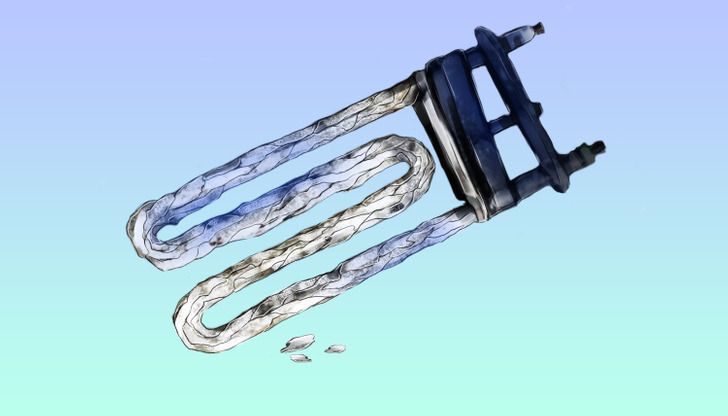
Limescale can form on surfaces from which hard water evaporates. It forms on faucets, sinks, shower heads, toilet bowls, kettles, boilers, showers, heating elements of dishwashers, and washing machines. Limescale also accumulates in metal pipes, filters, pumps, and other equipment.
The color of limescale may vary depending on the minerals it contains. Iron, for example, gives the scale a reddish-brown tint, and copper pipes can stain it blue.
If limescale is harmful
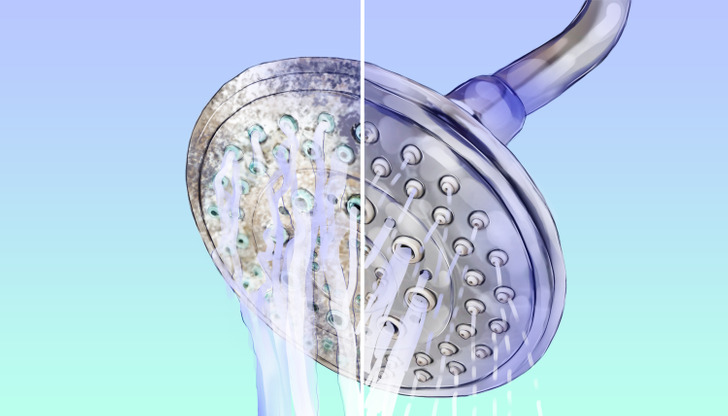
The limescale found in bathrooms looks unsightly. It accumulates quickly and eventually clogs faucets and shower heads and reduces their efficiency.
However, the real problem is not that obvious. Limescale itself is not harmful. But what it can cause can be harmful. An ordinary family of 4 people, with regular use of water supply, can produce up to 155 pounds of limescale in a year. Limescale can damage appliances that come in contact with water. Lime, when accumulated in pipes, can block them and cause cracks.
Homemade limescale removers
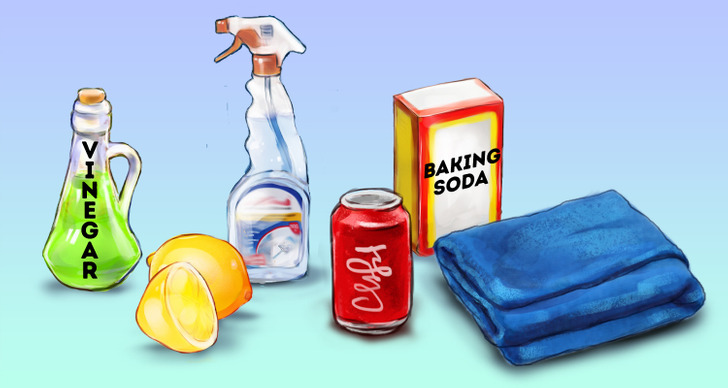
To remove limestone, you’ll need:
- Lemon juice and vinegar — the acids contained in them destroy the main component of limescale, calcium carbonate.
- Baking soda — when baking soda is mixed with vinegar, this results in a chemical reaction. The mixture sizzles, bubbles, and cleans the surface.
- Cola — it contains phosphoric acid that can remove rust and limescale.
For convenience and greater efficiency of the process, you can use a spray bottle. It’s convenient to wipe off limescale with a hard sponge or an old toothbrush. A soft cloth is good for polishing clean surfaces.
How to remove limescale
- From faucets
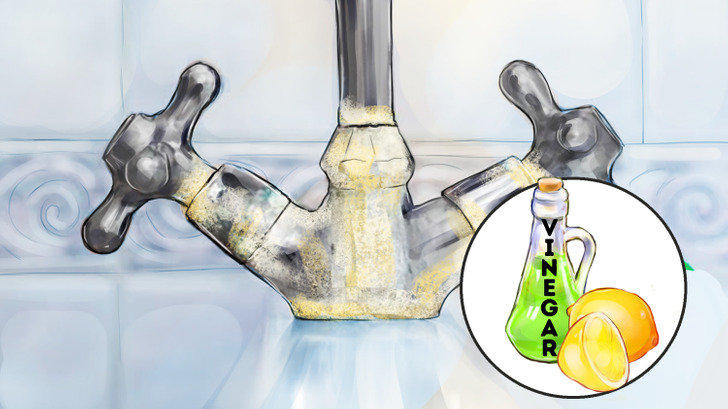
Use vinegar or lemon juice. To remove limescale from a faucet spout, fill a small container with vinegar or lemon juice, dip the end of the faucet into it, and secure it with a rubber band or tie. Leave overnight.
To clean the top of the faucet, it’s enough to soak a piece of cloth with lemon juice or vinegar and tightly wrap the faucet with it for a few hours. You may need to scrub the faucet lightly with a sponge or brush to remove residue. When cleaning faucets, you need to take the material of the coating into account: vinegar should not be used on chrome bathroom accessories.
- From a toilet
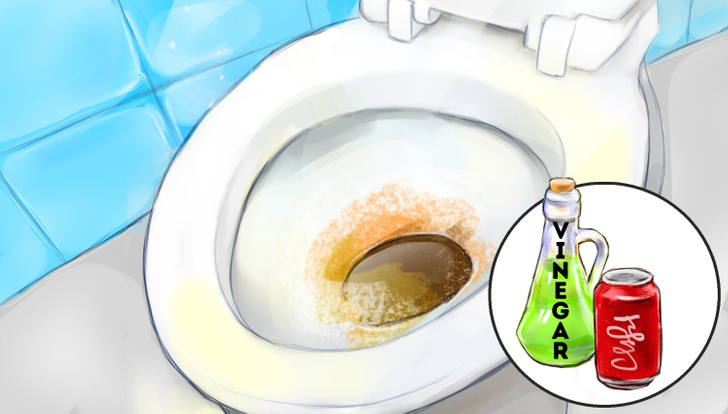
You’ll need vinegar or cola. First, clean the inside of the toilet with a brush. If the area affected by limescale is quite small, it’s enough to spray it with a mixture of vinegar and water in a 1:1 ratio. After an hour, use a flush to remove limescale. For more stubborn and profuse areas of limescale, undiluted vinegar should be used, which can be washed off after 3 to 4 hours.
For limescale on the bottom of the toilet, use regular, non-diet cola of any brand. The best solution is to pour 0.5 gallons of cola into the toilet and leave it overnight.
- From the bathroom
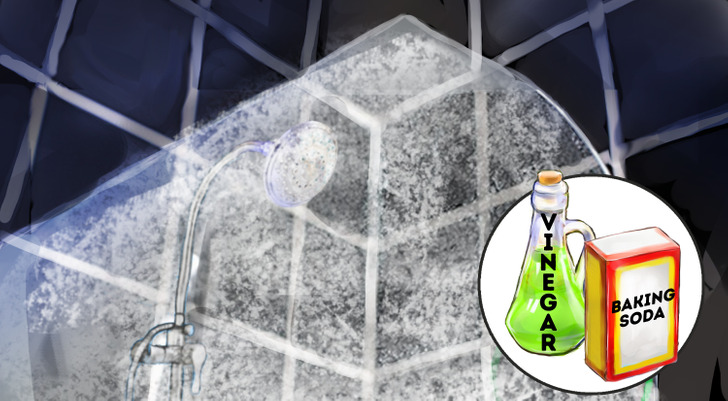
Baking soda and vinegar will help you out here. To descale your shower head, remove it and soak in a 1:1 mixture of vinegar and water overnight. Then rinse under running water. The particles of lime remaining in the nozzles can be removed with a needle.
The shower door, tiled walls, and bathtub can be cleaned with a mixture of baking soda and vinegar in a ratio of 2:1. Mix the ingredients until you get a paste and apply it to the limescale build-up for 10 minutes. Rinse thoroughly afterward.
- From kettles and coffee makers
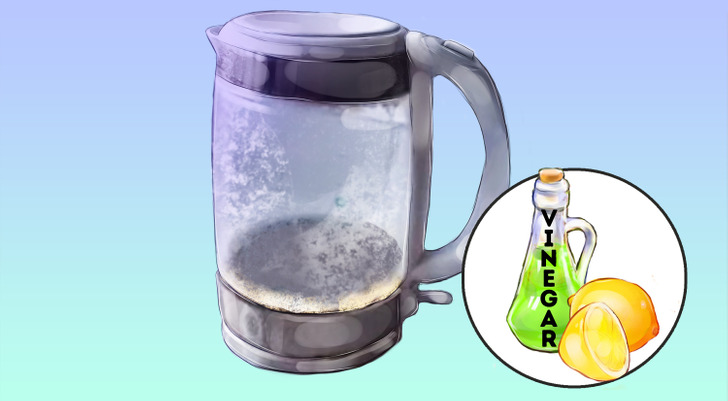
To clean a kettle or coffee maker, you can choose vinegar or lemon juice. Fill the kettle 3/4 full with water and the juice of one lemon, or with equal parts water and vinegar. Boil it. Then empty the kettle and rinse it several times with running water to remove limescale and the cleaning agent.
The same method is used for a coffee maker: fill the water tank a quarter full with vinegar or lemon juice, then 3/4 with water, then run the machine through its cycle with no coffee. Then repeat twice with plain water for the final stage of descaling.
- From a washer and dishwasher
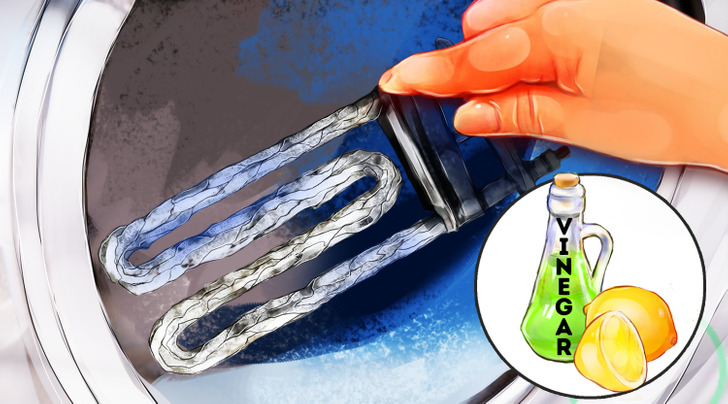
Both vinegar and lemon juice are equally good for descaling a washer. Take a large cup of one of these liquids, pour it into the detergent drawer, and run the wash cycle without laundry.
2 cups of vinegar will be enough to descale a dishwasher. Pour the vinegar into a deep bowl and place it on the bottom shelf. You need to run a cycle here too.